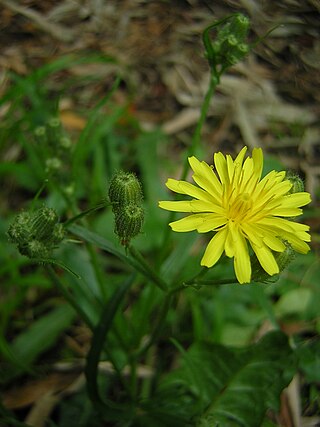
Chives, scientific name Allium schoenoprasum, is a species of flowering plant in the family Amaryllidaceae that produces edible leaves and flowers. Their close relatives include the common onions, garlic, shallot, leek, scallion, and Chinese onion.

Heracleum is a genus of biennial and perennial herbs in the carrot family Apiaceae. They are found throughout the temperate northern hemisphere and in high mountains as far south as Ethiopia. Common names for the genus or its species include hogweed and cow parsnip.

Armeria maritima, the thrift, sea thrift or sea pink, is a species of flowering plant in the family Plumbaginaceae. It is a compact evergreen perennial which grows in low clumps and sends up long stems that support globes of bright pink flowers. In some cases purple, white or red flowers also occur. It is a popular garden flower and has been distributed worldwide as a garden and cut flower. It does well in gardens designed as xeriscapes or rock gardens. The Latin specific epithet maritima means pertaining to the sea or coastal.

Centaurea cineraria, the velvet centaurea, also known as dusty miller and silver dust, is a species of flowering plant in the family Asteraceae endemic to southern Italy. In natural settings, it grows on coastal cliffs, ranging from 0–350 m above sea level, hence the plant's Italian name, fiordaliso delle scogliere. Mature plants may reach 80 centimetres (31.5 in) in height. The species produces purple flowers.

Artemisia campestris is a common and widespread species of plants in the sunflower family, Asteraceae. It is native to a wide region of Eurasia and North America. Common names include field wormwood, beach wormwood, northern wormwood, Breckland wormwood, boreal wormwood, Canadian wormwood, field sagewort and field mugwort.

Silene campanulata is a species of flowering plant in the family Caryophyllaceae known by the common names Red Mountain catchfly and bell catchfly. It may be a synonym of Silene greenei.

Van herbed cheese is a type of cheese traditionally made from raw sheep milk, though cow and goat milk may be used or added. It is semi-hard in texture, and is produced primarily in the Van Province of Turkey.

Silene uniflora is a species of flowering plant in the family Caryophyllaceae known by the common name sea campion.

Arabis caucasica is a species of flowering plant in the mustard family (Brassicaceae) known by the common names garden arabis, mountain rock cress or Caucasian rockcress.

Astrantia major, the great masterwort, is a species of flowering plant in the family Apiaceae, native to central and eastern Europe. Growing up to 90 cm (35 in) tall by 45 cm (18 in) broad, it is an herbaceous perennial, much used in gardens.

Iris notha is a species in the genus Iris, it is also in the subgenus Limniris and series Spuriae. It is a rhizomatous perennial with deep blue or violet flowers from the Caucasus region. It is cultivated as an ornamental plant in temperate regions. It was once Iris spuria subsp. notha, and can often be found under that name. It has the common name of fake iris or mimic iris in Russia.

Crepis foetida is a European species of flowering plant in the family Asteraceae with the common name stinking hawksbeard. It is widespread across much of Europe and Siberia, as well as being sparingly naturalized in scattered locations in the United States and Australia.

Ceratocarpus is a genus of flowering plants in the family Amaranthaceae. It has only one currently accepted species, Ceratocarpus arenarius, found in Bulgaria, Romania, Crimea, Russia, Anatolia, the Caucasus, Iran, Afghanistan, Pakistan, Central Asia, the Altai, western Siberia, Xinjiang in China, and Mongolia. A bushy herbaceous plant, no more than 30 cm tall, it is a valuable fodder for sheep, goats and horses, and it grows well in degraded and trampled soils.

Sisymbrium volgense is a species of flowering plant belonging to the family Brassicaceae.

Anthemis cretica, the Cretian mat daisy or white mat chamomile, is a species of flowering plant in the family Asteraceae. It or its many subspecies can be found around the Mediterranean region, the Black Sea area, Poland, the Caucasus, and the Middle East as far as Iran. It is highly morphologically variable, and the namesake of a species complex.

Silene keiskei is a species of flowering plant in the family Caryophyllaceae. The species is native to Japan (Honshu). It grows in temperate climates and in the high mountains.

Silene mandonii is a species of flowering plant in the family Caryophyllaceae.

Silene rubella is a species of flowering plant in the family Caryophyllaceae.

Silene aegyptiaca is a species of flowering plant in the family Caryophyllaceae. The common name for this species is Egyptian campion or Egyptian catchfly.

Silene italica is a species of plant native to Southern Europe and parts of Asia. It is also introduced to parts of the United States and Northern Europe.




















